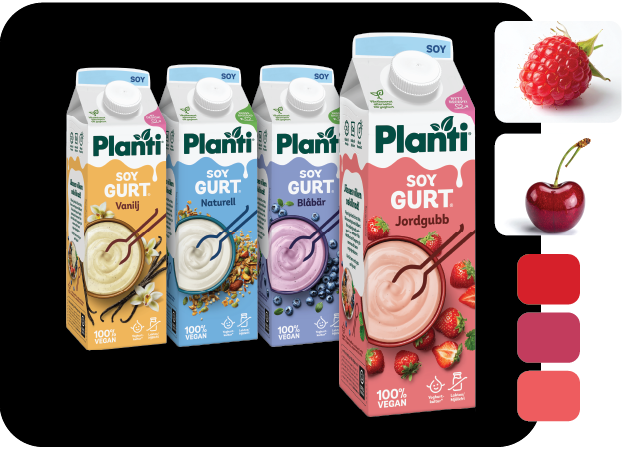Beyond the blueprint: mastering die lines in packaging design
Understanding die lines in packaging design is crucial to ensuring your artwork prints and folds flawlessly. In this article, we'll break down what...
2 min read
 Tilda Eriksson
:
November 14, 2025 at 11:15 AM
Tilda Eriksson
:
November 14, 2025 at 11:15 AM

If your brand already has an established product portfolio and you’re planning to launch, for example, a new flavour yoghurt, you must approach the task with a design-architecture mindset. Even minor design missteps at this stage can lead to major complications later in your packaging workflow.
Here are the three most frequent mistakes brands make when extending a product range — and how you can avoid them.
When you develop packaging for a new flavour (say a raspberry yoghurt) and choose a red shade for the design, it’s essential to consider what other flavour launches might follow.
If you select a warm, yellow-rosy red, you may inadvertently eliminate the option of adding strawberry later (which often uses a similar warm red).
If you pick a deep burgundy red, you may limit the possibility of introducing a cherry variant (commonly depicted with a richer red).
Best practice: Map out the colour spectrum for all current and planned future flavours. Create a flexible colour architecture so that each flavour can have its own identity without undermining the overall range.
When launching a new product, naturally you want it to catch the consumer’s eye. However, if the design strays too far from other products in your range, the overall brand portfolio will start to look incoherent.
Best practice:
Use familiar brand cues (logo placement, typography, tone of voice, structure) to ground the new variant in the brand family.
Introduce a distinct flavour cue (colour accent, imagery, graphics) so the variant stands out.
Consider using a limited-edition design for a debut flavour; once established, you can move it into the standard range, ensuring both novelty and cohesion.

With advances such as AI-generated imagery and automated design tools, it’s tempting to overhaul design approaches overnight. But if your existing range uses more traditional techniques, mixing both styles without strategy can fragment the look and feel of your brand.
Best practice:
If you’re introducing new technology (e.g., AI visuals, generative design), either apply it across the whole range at once or keep the new variant visually aligned with traditional methods.
Alternatively, plan a full brand refresh so all SKUs evolve together rather than having one “odd one out.”
From idea to shelf, manage every new product version, artwork, and approval with Cway. Keep your range organized and launches on schedule.
The launch of a new product within a range isn’t just about that one SKU — it must integrate with your assortment as a whole. The key to success lies in having the full range’s design architecture at your disposal, and making intentional decisions about how the new variant fits alongside existing products. In the FMCG space, where purchase decisions often happen at the shelf, every package is a brand bearer — and every element must work together to reinforce your brand’s position.

Understanding die lines in packaging design is crucial to ensuring your artwork prints and folds flawlessly. In this article, we'll break down what...

In this article, we’ll explore how a design project management tool helps creative teams and brand managers stay organized, deliver faster, and...

Creating the perfect e-commerce packaging design and hero images has never been more important. As online shopping continues to dominate retail,...